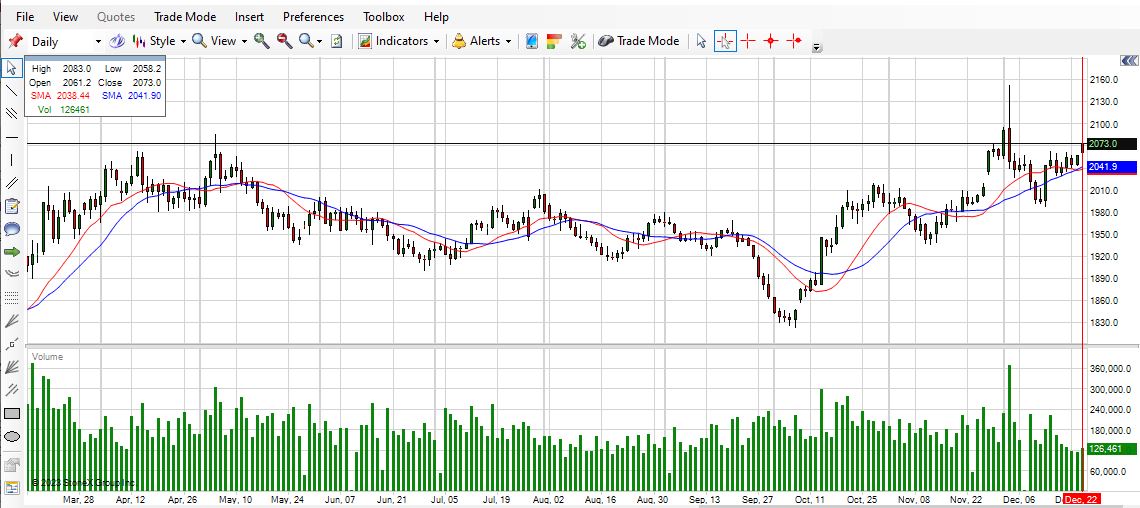Gold Futures Trading
Current Gold Futures Trading | Futures Prices
Gold holds an almost universal appeal due to its rarity, versatility, and beauty. Many individual investors physically buy gold coins and bullion as a way to avoid the uncertainties of inflation, and the volatility of other asset types. However, physically trading gold can pose many problems for investors, which makes trading in gold futures a much more viable option for individuals who wish to break into this market.
A gold futures contract is a commitment between traders to deliver, or take delivery of, a quantity of gold on a specific date at a specific price. As with other commodities, gold futures options contracts are also available, giving traders the right to deliver, or take delivery of the commodity without the obligation inherent in a futures contract.
An important advantage to trading in gold futures is the fact that because they are traded at centralized exchanges, futures contracts offer more financial leverage, flexibility, and financial integrity as opposed to physically trading this precious metal. Traders only need to put up a percentage of the contract cost, which means that a considerably smaller capital is required compared to a physical trade. Of course, this leverage means that there is the potential for higher risk and higher returns when trading in futures contracts.
As one of the leading commodity brokers in the industry, Cannon Trading has helped clients all over the world achieve their trading goals. We have been in business since 1988, and have received several customer service awards, and consistently maintained good standing with the NFA and CFTC.
Our professional commodities brokers will work with you to understand your specific trading style and requirements, and provide you the essential advice and information you need to thrive in this highly lucrative market.
Cannon Trading's Broker-assisted Trading solution provides traders who are new to the field with the essential advice and tools they need to accelerate their understanding of the gold futures market. Get daily updated for Gold Futures Level and Resistance support from Cannon Trading.
Contact us today to learn more about commodities trading, as well as information on options prices and contracts.
There is a substantial risk of loss in trading commodity futures, options and off-exchange foreign currency products. Past performance is not indicative of future results.
Gold Futures Trading Prices — Historical Chart
Chart of Gold Futures Trading futures updated December 25th, 2023. Click the chart to enlarge. Press ESC to close.

Disclaimer: This material is of opinion only and does not guarantee any profits. These are risky markets and only risk capital should be used. Past performances are not necessarily indicative of future results.
![]()
Gold Futures Trading Contract Specifications
|
|
| Product Symbol | GC |
|
|
| Contract Size | 100 troy ounces |
|
|
| Price Quotation | U.S. Dollars and Cents per troy ounce |
|
|
| Venue | CME Globex, CME ClearPort, Open Outcry (New York) |
|
|
| CME Globex Hours (EST) | Sunday – Friday 6:00 p.m. – 5:15 p.m. (5:00 p.m. – 4:15 p.m. Chicago Time/CT) with a 45-minute break each day beginning at 5:15 p.m. (4:15 p.m. CT) |
|
|
| CME ClearPort Hours (EST) | Sunday – Friday 6:00 p.m. – 5:15 p.m. (5:00 p.m. – 4:15 p.m. Chicago Time/CT) with a 45-minute break each day beginning at 5:15 p.m. (4:15 p.m. CT) |
|
|
| Open Outcry | Monday – Friday 8:20 a.m. - 1:30 p.m. (7:20 a.m. - 12:30 p.m. CT) |
|
|
| Minimum Fluctuation | $0.10 per troy ounce |
|
|
| Termination of Trading | Trading terminates on the third last business day of the delivery month. |
|
|
| Listed Contracts | Trading is conducted for delivery during the current calendar month; the next two calendar months; any February, April, August, and October falling within a 23-month period; and any June and December falling within a 60-month period beginning with the current month. |
|
|
| Settlement Type | Physical |
|
|
| Delivery Period | Delivery may take place on any business day beginning on the first business day of the delivery month or any subsequent business day of the delivery month, but not later than the last business day of the current delivery month. |
|
|
| Grade and Quality Specifications | Gold delivered under this contract shall assay to a minimum of 995 fineness. |
|
|
| Exchange Rule | These contracts are listed with, and subject to, the rules and regulations of COMEX. |
![]()
A Brief History of Gold Futures
Perhaps no other market in the world has the universal appeal of the gold market. For centuries, gold has been coveted for its unique blend of rarity, beauty, and near indestructibility. Nations have embraced gold as a store of wealth and a medium of international exchange; individuals have sought to possess gold as insurance against the day-to-day uncertainties of paper money.
COMEX Division gold futures and options provide an important alternative to traditional means of investing in gold such as bullion, coins, and mining stocks.
Gold futures contracts are also valuable trading tools for commercial producers and users of the metal. Commercial concentrations of gold are found in widely distributed areas: in association with ores of copper and lead, in quartz veins, in the gravel of stream beds, and with pyrites (iron sulfide). Seawater contains astonishing quantities of gold, but its recovery is not economical.
The greatest early surge in gold refining followed the first voyage of Columbus. From 1492 to 1600, Central and South America and the Caribbean islands contributed significant quantities of gold to world commerce. Colombia, Peru, Ecuador, Panama, and Hispaniola contributed 61% of the world's newfound gold during the 17th century. In the 18th century, they supplied 80%.
Following the California gold discovery of 1848, North America became the world's major gold supplier; from 1850 to 1875, more gold was discovered than in the previous 350 years. By 1890, the gold fields of Alaska and the Yukon were the principal sources of supply and, shortly afterwards, discoveries in the African Transvaal indicated deposits that exceeded even these. Today, the principal gold producing countries include South Africa, the United States, Australia, Canada, China, Indonesia, and Russia.
The United States first assigned a formal monetary role for gold in 1792, when Congress put the nation's currency on a bimetallic standard, backing it with gold and silver.
During the Great Depression of the 1930s, most nations were forced to sever their currency from gold in an attempt to stabilize their economies.
Gold formally reentered the world's monetary system in 1944, when the Bretton Woods agreement fixed all the world's paper currencies in relation to the U.S. dollar which in turn was tied to gold. The agreement was in force until 1971, when President Nixon effectively cancelled it by ending the convertibility of the dollar into gold.
Today, gold prices float freely in accordance with supply and demand, responding quickly to political and economic events.
Gold is a vital industrial commodity. It is an excellent conductor of electricity, is extremely resistant to corrosion, and is one of the most chemically stable of the elements, making it critically important in electronics and other high-tech applications.
A broad cross-section of companies in the gold industry, from mining companies to fabricators of finished products, can use the COMEX Division gold futures and options contracts to hedge their price risk. Furthermore, gold has traditionally had a role in investment strategies, and gold futures and options can be found in investors' portfolios.
Source: © 2006 New York Mercantile Exchange, Inc. All Rights Reserved.
![]()
 Free Demo Account
Free Demo Account
Index Futures
Energy Futures
Grain Futures
Financial Futures
Currency Futures
Agriculture Futures
MICRO Futures
Index futures
Micro e-mini ESMicro e-mini NQ
Micro e-mini Russell
Micro e-mini dow
Currency futures
Micro AUD/USDMicro EUR/USD
Micro GBP/USD
Micro USD/CHF
Energy futures
Micro Crude OilCrypto Currency futures
Micro BitcoinMicro Ether
Treasury futures
Micro Treasury YieldEUREX futures
Micro DAXOur Approach
You and your broker will work together to achieve your trading goals. We develop long term
relationships with our clients so that we can grow and improve together.
Learn More About Choosing Cannon
Our Platforms
Please click on one of our platforms below to learn more about them, start a free demo, or open
an account.
E-Futures
Firetip (Cannon Pro)
Trading Education
Recommended Resources
Guide to Risk and Opportunities of Futures and Options Trading
Steps to Successful Day-Trading
Day Trading Webinar






